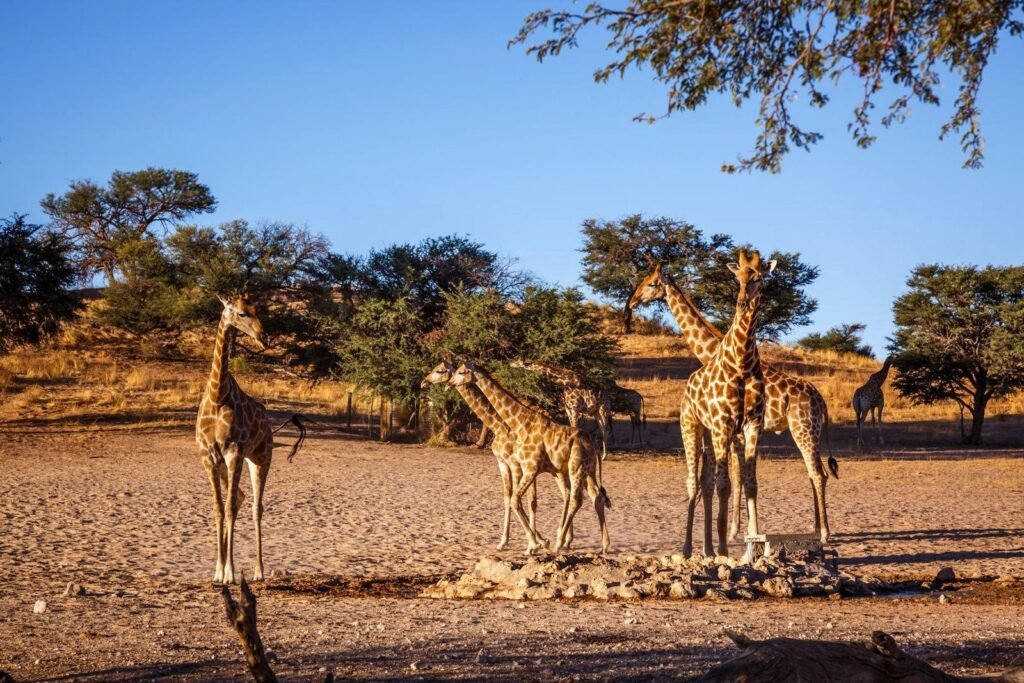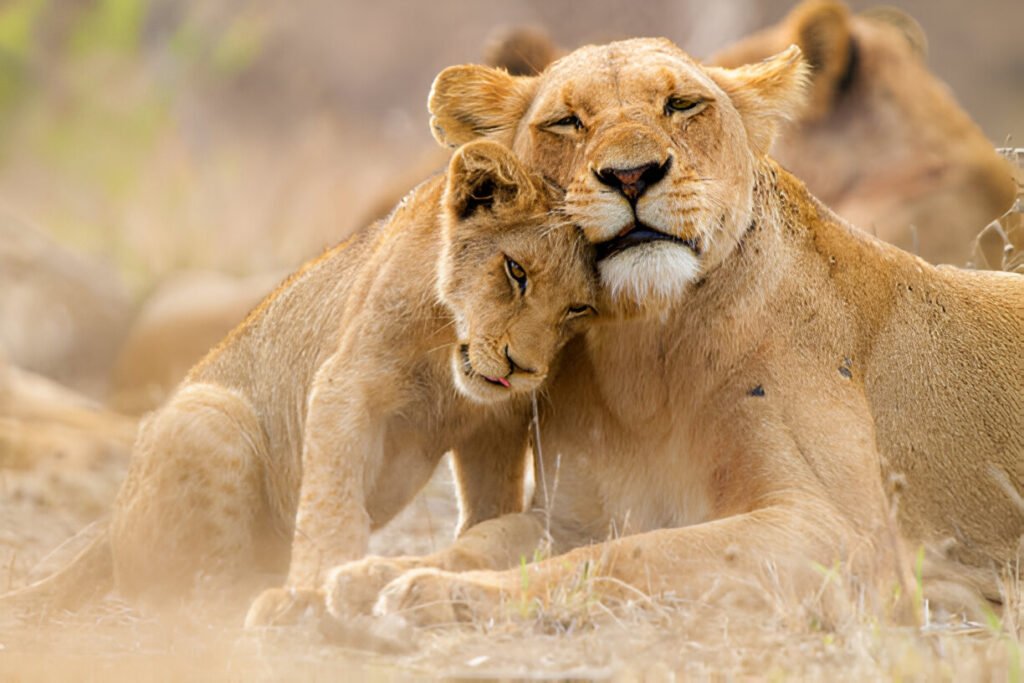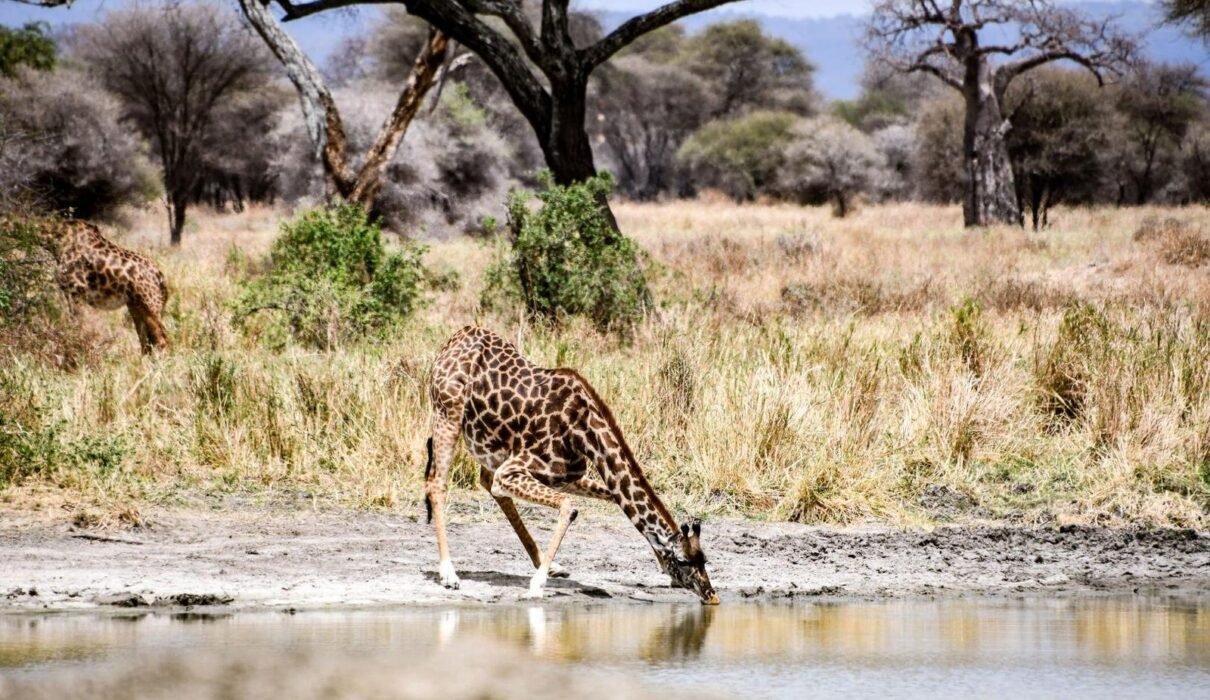Introduction to Tanzania as an Adventure Destination
Tanzania Adventure Tours: Top Safari, Climbing, and Cultural Experiences .Tanzania, a land of stunning contrasts, offers an unparalleled adventure experience. From the iconic plains of the Serengeti to the towering peak of Mount Kilimanjaro, the country’s diverse landscapes cater to thrill-seekers, nature enthusiasts, and cultural explorers alike. Whether you’re yearning to witness the annual Great Migration, conquer Africa’s highest mountain, or immerse yourself in the rich traditions of indigenous tribes, Tanzania has something extraordinary for every adventurer. The ideal time for most adventure activities in Tanzania falls between June and October, during the dry season, although certain activities, like climbing Kilimanjaro, can also be done in January and February

Tanzania Adventure Tours: Top Safari, Climbing, and Cultural Experiences – Types of Adventure Tours in Tanzania
Tanzania offers a rich array of adventure tours, each tailored to different interests and levels of experience:
- Safari Tours: Experience the thrill of seeing the Big Five—lion, elephant, buffalo, leopard, and rhino—up close in their natural habitats. The Serengeti National Park, Ngorongoro Crater, and Selous Game Reserve are just a few of the prime locations where these safaris take place. A safari in Tanzania is not just about wildlife; it’s also about the incredible landscapes, from vast savannahs to lush wetlands.
- Mountain Climbing Expeditions: Tanzania is home to some of Africa’s most famous peaks. Climbing Mount Kilimanjaro, the “Roof of Africa,” is a bucket-list challenge for many adventurers. The lesser-known Mount Meru offers a quieter but equally rewarding climb, and the Usambara Mountains provide lush, scenic trails for those seeking more tranquil hikes.
- Walking and Trekking Safaris: For a more intimate connection with nature, walking safaris in areas like the Ngorongoro Highlands or the Serengeti allow you to explore the wilderness on foot, accompanied by experienced guides who share their deep knowledge of the flora and fauna.
- Cultural and Tribal Experiences: Engage with Tanzania’s rich cultural heritage by visiting local tribes such as the Maasai, Hadzabe, and Chagga. These experiences offer insights into traditional ways of life, from the Maasai’s pastoral traditions to the Hadzabe’s ancient hunter-gatherer lifestyle.
- Water-Based Adventures: Tanzania’s coastlines and inland lakes provide a variety of water adventures. Snorkeling and diving in the coral-rich waters of Zanzibar, deep-sea fishing in the Indian Ocean, and kayaking on Lake Duluti are just a few of the aquatic adventures awaiting visitors.
- Cycling and Biking Tours: Explore Tanzania’s diverse landscapes on two wheels. Mountain biking through Arusha National Park or along the scenic Great Rift Valley offers a unique perspective on the country’s natural beauty. Coastal biking tours in Zanzibar combine cycling with cultural exploration.
- Bird Watching Tours: With over 1,000 bird species, Tanzania is a paradise for birdwatchers. Lake Manyara, the wetlands of Selous, and the Serengeti are top spots for birding enthusiasts, offering sightings of everything from flamingos to raptors.
- Photography Tours: Capture the beauty of Tanzania’s wildlife, landscapes, and cultures on guided photography tours. These tours are designed for both amateur and professional photographers, providing opportunities to shoot stunning wildlife scenes, dramatic landscapes, and vibrant local life.
Tanzania Adventure Tours: Top Safari, Climbing, and Cultural Experiences :- Top Safari Destinations in Tanzania
Tanzania’s national parks and game reserves are globally renowned for their breathtaking wildlife and scenery:
- Serengeti National Park: Known for the Great Migration, where millions of wildebeest, zebras, and gazelles move in search of fresh grazing grounds, the Serengeti offers some of the best wildlife viewing in the world. Predator sightings, including lions, cheetahs, and leopards, are common.
- Ngorongoro Crater: This UNESCO World Heritage site is a large volcanic caldera that harbors an exceptional variety of wildlife, including rare black rhinos, elephants, and large lion prides. The crater’s unique ecosystem supports a dense population of animals, making it a prime safari destination.
- Tarangire National Park: Famous for its massive baobab trees and large elephant herds, Tarangire offers a quieter, more intimate safari experience compared to the more famous parks. The park’s varied landscape is also home to migratory wildebeest, zebras, and over 550 bird species.
- Lake Manyara National Park: Nestled at the base of the Great Rift Valley escarpment, this small but diverse park is known for its tree-climbing lions, large flocks of flamingos, and rich birdlife. The lake itself is a seasonal home to thousands of migratory flamingos.
- Selous Game Reserve: One of Africa’s largest and least visited reserves, Selous offers a remote and wild safari experience. It’s known for its large populations of elephants, hippos, crocodiles, and African wild dogs, with fewer tourists to share the experience with.
- Ruaha National Park: Tanzania’s largest national park, Ruaha is celebrated for its rugged, unspoiled wilderness and significant predator populations, including one of Africa’s largest lion populations. The park is also a haven for bird enthusiasts, with over 570 species recorded.
- Arusha National Park: Ideal for day trips and shorter safaris, Arusha National Park offers a variety of landscapes, from the forested slopes of Mount Meru to the tranquil Momella Lakes. The park is home to giraffes, zebras, and the elusive colobus monkey.
Tanzania Adventure Tours: Top Safari, Climbing, and Cultural Experiences :- Mountain Climbing Adventures
Tanzania is synonymous with adventure, particularly for those who dream of conquering some of Africa’s highest and most famous peaks:
- Mount Kilimanjaro: Standing at 5,895 meters, Kilimanjaro is the tallest mountain in Africa and one of the Seven Summits. The trek to the summit is challenging but non-technical, making it accessible to trekkers with a good level of fitness. The mountain offers several routes, including the popular Marangu and Machame routes, each offering different experiences of the diverse ecosystems and stunning views.
- Mount Meru: As Tanzania’s second-highest peak, Mount Meru offers a less crowded but equally spectacular climb. Standing at 4,566 meters, the trek is more challenging due to its steepness but rewards climbers with breathtaking views of Kilimanjaro and Arusha National Park.
- Usambara Mountains: Located in northeastern Tanzania, the Usambaras are known for their cool climate, lush forests, and beautiful landscapes. These mountains are ideal for hikers who prefer shorter treks and offer the chance to explore rural Tanzanian life.
Tanzania Adventure Tours: Top Safari, Climbing, and Cultural Experiences :- Walking and Trekking Safaris
For those seeking a more immersive experience in Tanzania’s wilderness, walking and trekking safaris provide the opportunity to connect with nature on a deeper level:
- Ngorongoro Highlands Trek: Trekking through the Ngorongoro Highlands offers dramatic landscapes and the opportunity to see wildlife up close. This trek typically includes visits to Maasai villages, providing a cultural component to the adventure.
- Serengeti Walking Safari: Walking safaris in the Serengeti offer a chance to explore the vast plains on foot, accompanied by experienced guides who ensure safety while providing insights into the flora and fauna.
- Lake Natron Trekking: Known for its stark and stunning landscapes, Lake Natron is a key breeding site for flamingos and offers challenging trekking routes, including hikes to Ol Doinyo Lengai, an active volcano.
- Walking Safaris in Selous Game Reserve: Selous offers some of the most remote and exciting walking safaris in Africa, where you can track wildlife on foot through untouched wilderness.
Tanzania Adventure Tours: Top Safari, Climbing, and Cultural Experiences: – Cultural and Tribal Experiences
Tanzania’s cultural tours allow visitors to delve into the rich traditions and lifestyles of its diverse ethnic groups:
- Maasai Tribe Encounters: The Maasai are perhaps Tanzania’s most famous ethnic group, known for their distinctive dress and pastoral lifestyle. Visits to Maasai villages allow you to learn about their traditions, participate in traditional dances, and understand their deep connection to the land.
- Hadzabe Bushmen Cultural Tour: The Hadzabe are one of the last hunter-gatherer tribes in Africa. Spending time with the Hadzabe offers a rare glimpse into a way of life that has remained largely unchanged for thousands of years.
- Datoga Tribe Visits: Known for their blacksmithing skills, the Datoga live near the Hadzabe and are traditionally cattle herders. Visits to Datoga villages often include demonstrations of traditional metalworking techniques.
- Chagga Cultural Tour: The Chagga people live on the slopes of Mount Kilimanjaro and are known for their coffee farming. A cultural tour often includes visits to coffee plantations, local markets, and a glimpse into Chagga history and traditions.
- Zanzibar Cultural Experiences: Zanzibar, with its rich history as a trading hub, offers a unique blend of African, Arab, and Indian cultures. Cultural tours here include visits to Stone Town, spice plantations, and traditional dhow sailing experiences.
Water-Based Adventures
Tanzania’s coastal and inland waterways provide a playground for a variety of aquatic adventures:
- Zanzibar Diving and Snorkeling: The warm, clear waters of Zanzibar are home to vibrant coral reefs and abundant marine life, making it a premier destination for diving and snorkeling. Sites like Mnemba Atoll are particularly popular.
- Deep-Sea Fishing in the Indian Ocean: Tanzania’s Indian Ocean coast offers excellent deep-sea fishing opportunities, with species such as marlin, tuna, and sailfish providing exciting challenges for anglers.
- Canoeing in Lake Duluti: A serene and scenic option, canoeing on Lake Duluti offers the chance to spot birdlife and enjoy the peaceful surroundings of this volcanic crater lake near Arusha.
- White-Water Rafting on the Rufiji River: For adrenaline seekers, white-water rafting on the Rufiji River in Selous Game Reserve provides an exhilarating way to explore the wilderness.
- Kayaking and Sailing in Mafia Island: Mafia Island, part of the Tanzanian archipelago, offers calm waters ideal for kayaking and traditional dhow sailing, as well as opportunities for whale shark sightings.
Cycling and Biking Tours
Cycling offers a unique way to explore Tanzania’s diverse landscapes, combining physical activity with the chance to see the country up close:
- Cycling the Great Rift Valley: This route offers challenging rides with stunning views, passing through diverse ecosystems and local villages.
- Mountain Biking in Arusha National Park: Biking through Arusha National Park allows for close encounters with wildlife and the chance to explore the park’s varied terrain, including forests, grasslands, and lakes.
- Coastal Cycling Routes: Cycling along Tanzania’s coast, particularly in Zanzibar, combines the beauty of sandy beaches and historic towns with the challenge of long-distance riding.
- Bicycle Tours in Zanzibar: Explore Zanzibar’s spice plantations, historic Stone Town, and coastal villages on a guided bicycle tour that offers both cultural insights and natural beauty.
- Multi-Day Biking Expeditions: For those seeking a more immersive experience, multi-day biking expeditions can take you through some of Tanzania’s most remote and beautiful landscapes, often combined with camping under the stars.
Bird Watching in Tanzania
With its diverse ecosystems, Tanzania is a birdwatcher’s paradise:
- Birding in Serengeti National Park: While famous for its big mammals, the Serengeti is also home to an impressive array of bird species, including raptors, ostriches, and colorful bee-eaters.
- Bird Watching at Lake Manyara: Known for its large flocks of flamingos, Lake Manyara is a top spot for birding, with over 400 species recorded, including pelicans, storks, and herons.
- Wetlands and Forest Birding: Tanzania’s wetlands, such as those found in Selous, and forests like the Amani Nature Reserve, offer opportunities to spot rare and endemic bird species.
- Bird Watching in Selous Game Reserve: Selous is home to a wide variety of bird species, including the African skimmer, Pel’s fishing owl, and numerous kingfishers, making it a must-visit for serious birders.
- Lesser-Known Birding Locations: For those looking to escape the crowds, lesser-known birding spots like the Kilombero Valley and the Udzungwa Mountains offer unique species and tranquil environments.
Photography Tours
Tanzania’s stunning landscapes and wildlife make it a photographer’s dream:
- Wildlife Photography in the Serengeti: Capture the drama of the Great Migration, the intensity of predator-prey interactions, and the majestic presence of the Big Five on a Serengeti photography tour.
- Landscape Photography at Ngorongoro Crater: The vast expanse of the Ngorongoro Crater, with its varied landscapes and constantly changing light, offers endless opportunities for landscape photography.
- Cultural Photography in Rural Tanzania: Document the rich cultural diversity of Tanzania’s tribes and rural communities, capturing daily life, traditional ceremonies, and vibrant markets.
- Bird Photography in the Wetlands: With its rich avian life, Tanzania’s wetlands provide a perfect backdrop for bird photography, where you can capture both the beauty and behavior of various species.
- Night Photography in the Serengeti: For those interested in astrophotography, the Serengeti’s clear skies offer stunning opportunities to capture the night sky, as well as nocturnal wildlife.
Conservation and Responsible Tourism
Responsible tourism is essential for preserving Tanzania’s natural and cultural heritage:
- The Importance of Responsible Tourism: Choosing responsible tour operators that prioritize conservation and community support is key to ensuring that your adventure has a positive impact on Tanzania’s environment and people.
- Conservation Efforts in Tanzania: Learn about and support various conservation efforts aimed at protecting Tanzania’s wildlife, such as anti-poaching initiatives and habitat preservation projects.
- Community-Based Tourism Initiatives: Participate in tours that directly benefit local communities, helping to preserve traditional ways of life and ensure that tourism revenue is equitably distributed.
- Supporting Local Economies Through Tourism: By purchasing locally made products, staying in locally owned accommodations, and engaging in community-based tourism, you can help support Tanzania’s local economies.
Preparing for Your Tanzania Adventure Tour
Proper preparation is crucial for a safe and enjoyable adventure tour in Tanzania:
- Necessary Travel Documents and Visas: Ensure you have all the required travel documents, including a valid passport and necessary visas, before embarking on your adventure.
- Health Precautions and Vaccinations: Consult with a healthcare provider to ensure you have the recommended vaccinations and medications for travel to Tanzania, including malaria prophylaxis.
- What to Pack for an Adventure Tour: Pack appropriately for your activities, including sturdy footwear, appropriate clothing for varying weather conditions, and essential gear such as binoculars, a camera, and a good-quality backpack.
- Physical and Mental Preparation: Depending on the tour, physical preparation may include training for long hikes or altitude, while mental preparation might involve understanding the challenges of remote travel.
- Travel Insurance and Safety Tips: Comprehensive travel insurance is essential, covering adventure activities and emergency evacuations. Familiarize yourself with local safety advice and follow your guide’s instructions at all times.
Accommodation Options for Adventure Tours
Tanzania offers a range of accommodation options to suit different budgets and preferences:
- Luxury Safari Lodges: For those seeking comfort, Tanzania’s luxury lodges offer high-end amenities, gourmet dining, and spectacular locations within or near the national parks.
- Mid-Range Safari Camps: Mid-range camps offer comfortable accommodations with essential amenities, often located in prime wildlife viewing areas.
- Budget Camping Safaris: Budget-conscious travelers can opt for camping safaris, which provide a more rustic experience while still offering access to the country’s natural wonders.
- Eco-Lodges and Sustainable Stays: Eco-lodges focus on sustainability, offering eco-friendly accommodations that minimize environmental impact while providing a unique, close-to-nature experience.
- Beach Resorts in Zanzibar: After an adventure-filled tour on the mainland, many travelers head to Zanzibar’s beach resorts, which range from luxurious all-inclusive resorts to charming boutique hotels.
Cost of Adventure Tours in Tanzania
Understanding the costs involved in adventure tours can help you budget effectively:
- Factors Influencing the Cost: Costs vary depending on the type of tour, the length of stay, the level of accommodation, and the time of year. Peak seasons typically command higher prices.
- Typical Price Ranges for Different Tours: Safari tours can range from budget options at $150-$300 per day to luxury safaris costing upwards of $1,000 per day. Mountain climbing expeditions like Kilimanjaro climbs can range from $1,500 to $6,000, depending on the route and services provided.
- Budgeting Tips: To save on costs, consider traveling during the shoulder season, joining group tours, and booking in advance. Opting for mid-range accommodations or camping can also help keep expenses down.
- All-Inclusive vs. Pay-As-You-Go Options: All-inclusive packages often provide better value and convenience, covering accommodations, meals, transport, and activities. Pay-as-you-go options might offer more flexibility but can be more challenging to budget for.

Tanzania Adventure Tours: Top Safari, Climbing, and Cultural Experiences :- Frequently Asked Questions (FAQs)
- What is the best time to visit Tanzania for an adventure tour? The best time is during the dry seasons, from June to October and January to March, depending on the specific activities you plan to do.
- What are the most popular adventure activities in Tanzania? Safaris, mountain climbing, walking safaris, cultural tours, and water-based activities are among the most popular.
- Do I need a guide for these tours? Yes, for safaris, climbing, and many cultural tours, guides are essential for safety, logistics, and enhancing the overall experience.
- How can I ensure my tour is eco-friendly? Choose tour operators that prioritize sustainability, follow conservation guidelines, and engage in community-based tourism.
- What should I pack for an adventure tour in Tanzania? Essentials include sturdy footwear, lightweight and waterproof clothing, sun protection, a good camera, and any specialized gear needed for your specific activities.
- How safe is it to travel in Tanzania? Tanzania is generally safe for tourists, especially when traveling with reputable tour operators. However, it’s important to follow local advice, stay aware of your surroundings, and take common travel precautions
Tanzania Adventure Tours: Top Safari, Climbing, and Cultural Experiences : Conclusion
Tanzania is a dream destination for adventurers, offering a diverse range of experiences that cater to all types of travelers. From the thrill of a Serengeti safari to the challenge of summiting Mount Kilimanjaro, every adventure in Tanzania is enriched by its stunning landscapes, abundant wildlife, and vibrant cultures. Whether you’re an experienced adventurer or a first-time explorer, Tanzania promises unforgettable memories and once-in-a-lifetime experiences

